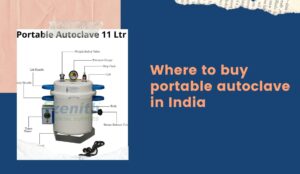Endodontic procedures require precision and accuracy, making endo motors a crucial tool for Endodontists. Endo motors are specially designed devices that aid in the preparation and shaping of the root canal during endodontic procedures. They are used to control the rotational speed, torque, and direction of the endodontic files, making the entire process more efficient and effective. With numerous types and models of endo motors on the market, it can be challenging to determine which one to choose. In this article, we will discuss the five key features to look for when selecting an endo motor.
Rotation Speed:
When choosing an endo motor, one of the first and most important feature to consider when selecting an endo motor is its rotational speed. It is important to select an endo motor with a range of adjustable rotational speeds to accommodate various file types and sizes. This range typically falls between 100 RPM to 800 RPM or higher. The ability to control the rotational speed is essential for efficient and precise cutting and shaping of the root canal during endodontic procedures.
Torque Control:
Another crucial factor to consider when selecting an endo motor is its ability to control torque. Torque control refers to the motor’s capability to maintain a consistent torque output regardless of the resistance encountered during the procedure. It is crucial to have the proper amount of torque during the procedure since too much torque can lead to file separation or tooth damage, while too little torque can result in incomplete cleaning and shaping of the root canal. An excellent endo motor should provide adjustable torque settings that allow the operator to control the force applied during the procedure.
Apex Locator Integration:
The third feature to consider when selecting an endo motor is whether or not it has an apex locator integration. An apex locator is a device that uses an electronic signal to determine the precise location of the apex of the root canal. By integrating the endo motor with an apex locator, the operator can ensure that the file is always in the correct position relative to the apex of the root canal, improving accuracy and reducing the risk of over-preparation or under-preparation of the canal.
Programmability:
The programmability of an endo motor is another essential feature to consider when choosing the right one for your dental practice. Programmability refers to the motor’s ability to execute a pre-determined sequence of movements and speeds during the procedure. This feature can be particularly useful for more complex endodontic procedures, as it allows the operator to automate certain aspects of the process while focusing on other critical areas. A high-quality endo motor should offer multiple settings and sequences that can be programmed to enhance the efficiency and effectiveness of your procedures.
For latest deals on endo motor you can check : Buy endo motor online
Ergonomics:
The fifth and final feature to consider when selecting an endo motor is ergonomics. Endodontic procedures can be long and tiring, so it is important to choose an endo motor that is comfortable and easy to use. The motor should be lightweight and balanced, with an ergonomic design that allows for a comfortable grip and reduces hand fatigue. Additionally, the motor should have a user-friendly interface with clear and easy-to-read controls and indicators.
Conclusion:
In conclusion, selecting the right endo motor is essential for successful endodontic procedures. When selecting an endo motor, it is important to consider the rotational speed, torque control, apex locator integration, programmability, and ergonomics. By choosing an endo motor with these key features, you can improve the efficiency, accuracy, and outcomes of your endodontic procedures. Remember to always read the specifications






